In the world of dressage, Christoph Hess, luckily for the world’s dressage horses, directs a large portion of his enthusiasm at improving their lot, not just the way they are ridden but also how they are bred, raised and housed.
Christoph has had a wide influence on the equestrian scene for many years. In Germany he is the former head of the Education section at Warendorf, he is also in demand as a judge, and more often, commentator, at the big German shows. He takes every opportunity to promote a horse friendly system of training – a dressage system that does what dressage is supposed to do, really promote the mental and physical well-being of the horse.
Christoph emphasizes over and over again, that we should work with the horse:
“The horse always tries to run away, that is part of his nature. When the rider uses just the bit to stop the horse, that is the rider’s first wrong move. We must always give the horse an open door. When we hold the horse onto the horse all the time with our hands, we take the horse out of its mental and physical balance, and that is the beginning of disharmony between horse and rider.”
Carl Hester and Wannadoo demonstrate. When I asked about the horse’s name, he replied – “the horse has to wan-a-do-it…
“Give the horse the feeling of freedom when you sit on it, always the feeling that it can move forward. Most riders all over the world use their hands to try and control their horse, the neck starts to shorten and then it all starts to go wrong.”
The responsibility of the rider is to ride correctly:
“The better the rider’s balance in the saddle, the better the communication. There are two things the rider must be – balanced, and supple. The rider has to find his balance in the saddle, not being held in position by a saddle in which you cannot move.”
Christoph is a keen student of the breeding of dressage horses, and his philosophy works hand in hand with the emergence of the new modern dressage horse:
“The better the movement of the horse, the better rider you have to be. If you think all you have to do is buy a horse in Europe with wonderful movement, and you won’t have to learn to ride it, you are wrong. Big gaits are more difficult to ride, piaffe is easier than extended trot to ride.”
“I see top horses after a few years, weeks or even days with a rider who is not balanced or supple, and they go down. Riders often don’t realize that they are using their reins to balance their body.”
“Is the rider able to give both reins?”
“Is the horse properly seeking the bit? Some top class horses are light in the neck and head, but always behind the bit. You always have to have the feeling that the horse learns to stretch its body. Not just stretching his front and neck, but the whole body. The horse needs his neck to balance his body – it is not so important that the horse’s nose is in front or behind the vertical, as long as the horse is stretching. If the horse is not stretched it is impossible for it to flex. First stretch, then flex.”
Ingrid Klimke’s bereiter warms up Dresden Man at home
And Ingrid and Dresden Man competing
“Why do we ride the horse long when we want it to go in nice self-carriage? Because that self-carriage is the result of stretching.”
“One of the first things in riding is to get the horse to accept the inside leg. The rider’s inside leg makes the horse, it governs speed and straightness, but it only works in conjunction with a proper outside rein, and in conjunction with the rider’s outside leg, that leg should be five to ten centimeters back, more like five than 10.”
And as you would have expected from someone in Christoph’s position, the centre of his address was the German Training scale, and in particular, the first three elements.
“Rhythm, this is absolutely important, four-beat walk, two-beat trot, and three-beat canter. Many judges don’t look enough at the three-beat of the canter. They look at the walk, and if it is two beat, that’s it, 1 mark, and they kill it, but they look at a four-beat canter and remark ‘lovely collected canter’. Rhythm has to include ‘tempo’ – you can ride too fast, or too slow. The paces have to be active, but not hurried and show enough swing in the back, the back is the bridge between the hind legs and the front legs. The better the tempo, the more elasticity the horse will show in the paces. The good rider has a wonderful feeling for timing. The goal is to make the lazy horse more active, and the too energetic horse to slow down.”
“Relaxation is very important. All over the world we see riders who can control tension and produce a spectacular test, but they are not able to show a supple horse.”
“Contact is about stretching through the whole body. Is the movement starting behind, swinging over the back and to the horse’s mouth. The rider has to feel the horse’s hind legs in his little finger.”
“The rider’s hands listen to the horse’s mouth. Is the horse happy? Is it stretching? In front of the aids? Accepting the bit? The most sensitive part of the horse is its mouth, this is the opportunity for the rider to feel what is happening. This is where we talk with the horse, our sensitive contact with the mouth.”
“Some people think the more loose the contact, the better, but the horse has to seek the contact. Sometimes it is better to have a stronger contact than loose. Firstly we want steady contact, then as soft as possible. Never work without a steady contact.”
“Horses are always in a frame, but often they don’t seek the contact properly, and you can’t give high marks to a horse that is behind the bit.”
Flexion: Many people think they have to bring the horse’s head as much as possible to the left or the right, so the horse is saying good morning. No – this is not what we want, we want to see just a little bit of the horse’s eye and nose. Don’t take the horse out of balance.”
“The goal of dressage is to have a horse in harmony, and in front of you – both horse and rider relaxed, positive and forward. Dressage is not doing movement, movement, movement, because they are in the Rule Book, it is making the horse obedient, making the horse supple, making the horse in front of you.”
Looking for top European bloodlines in Australia? There’s a range of top stallions, like Total Hope, a winner himself, he is available from www.ihb.com.au
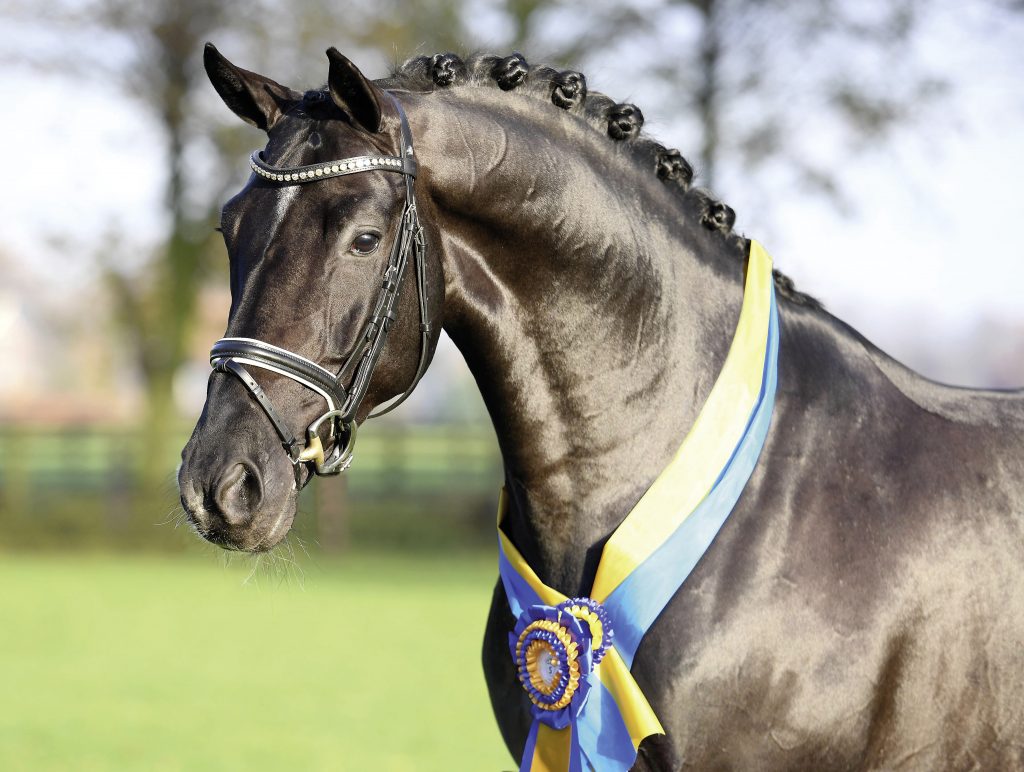
Or the exciting new young sire Fynch Hatton, plus many more, find the right stallion for your mare – go to www.ihb.com.aul
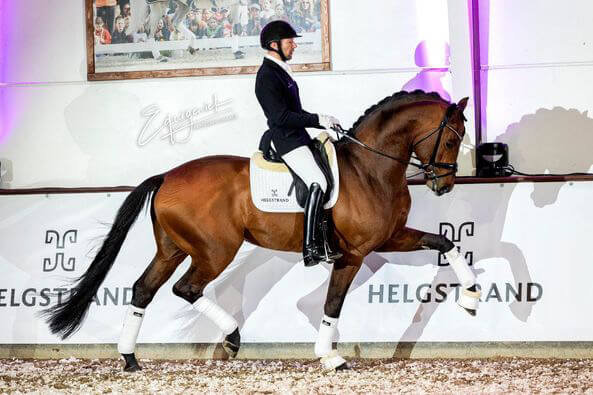


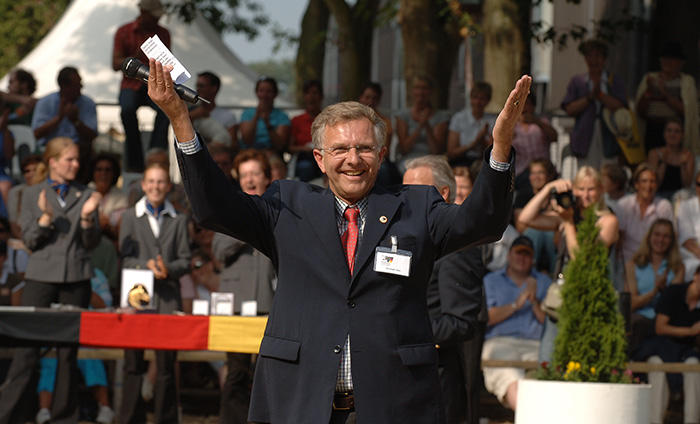
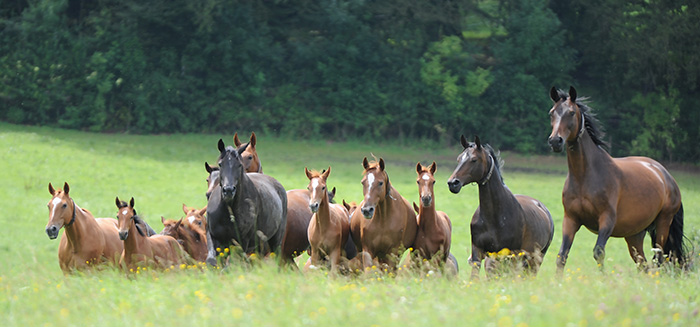
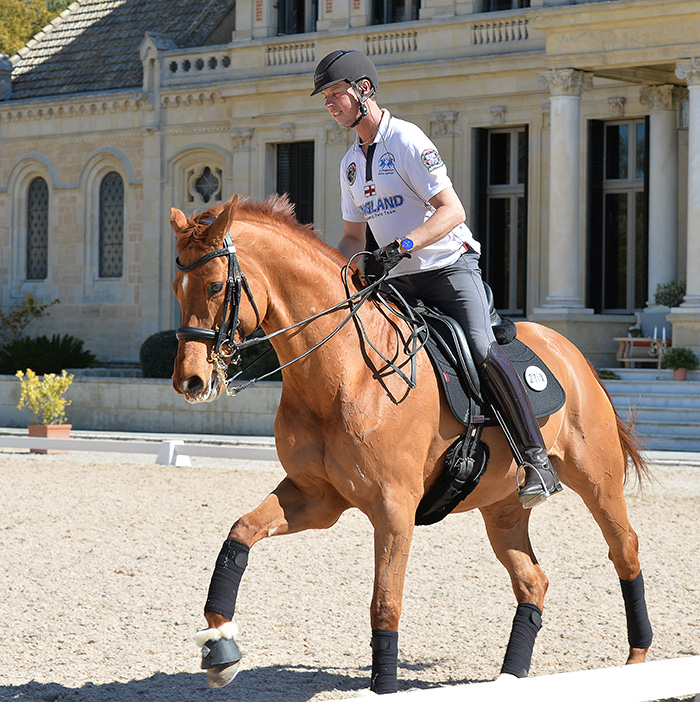
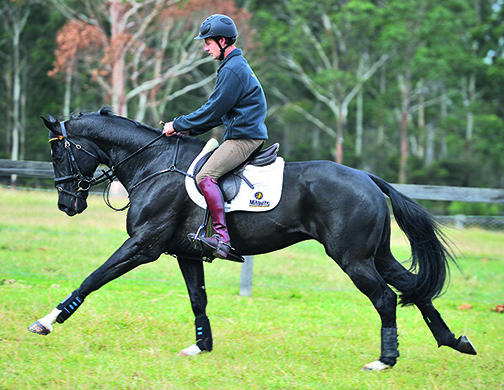
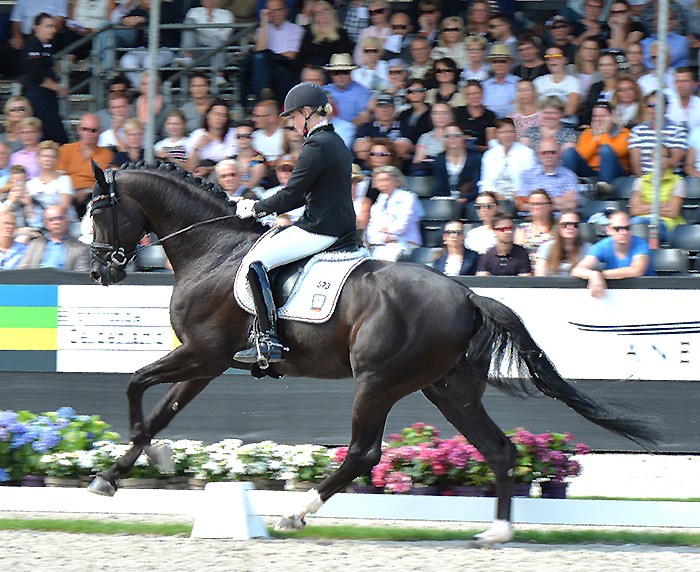
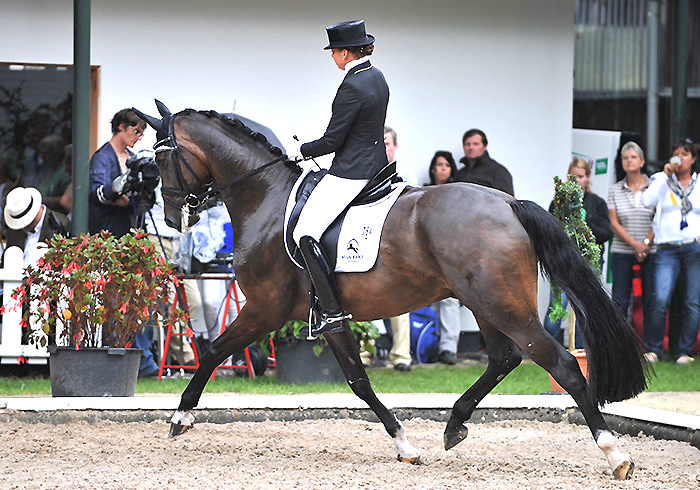
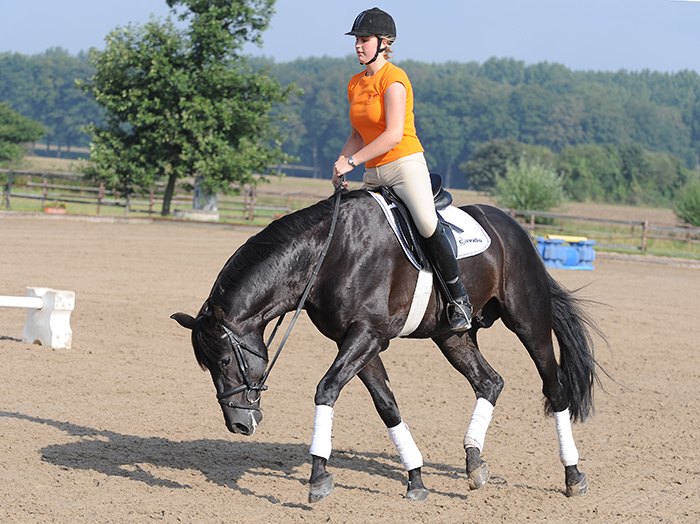
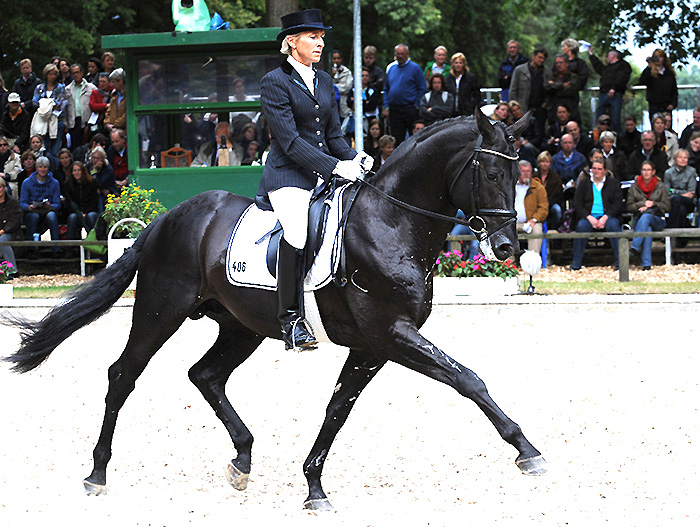
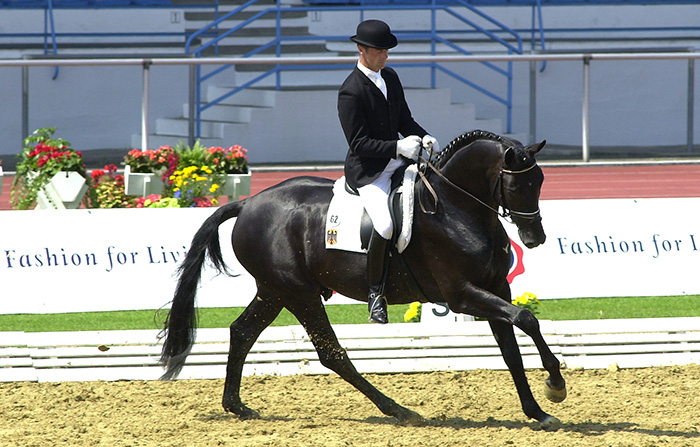
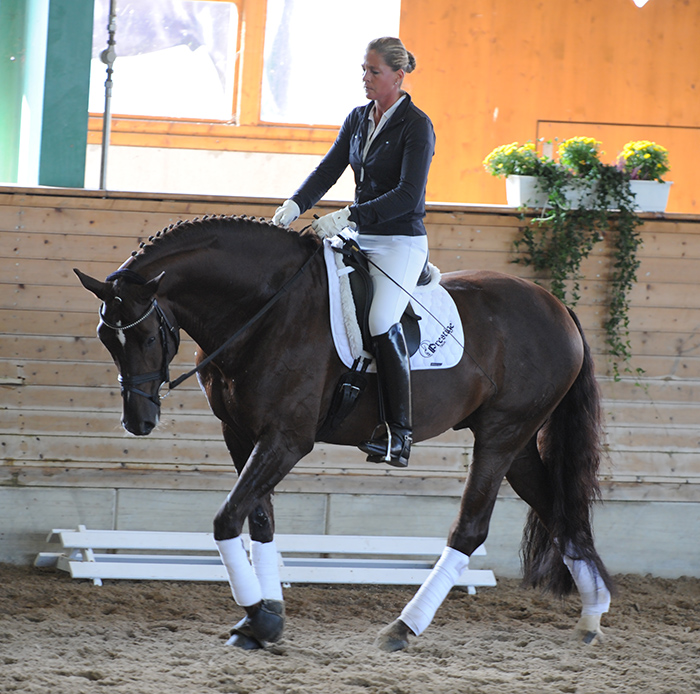
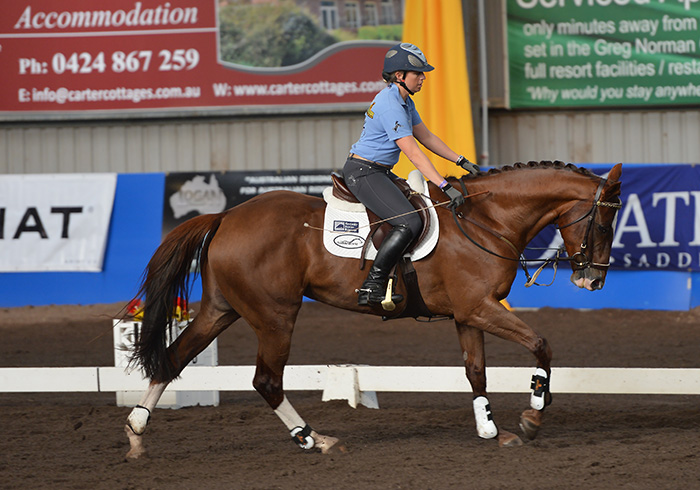
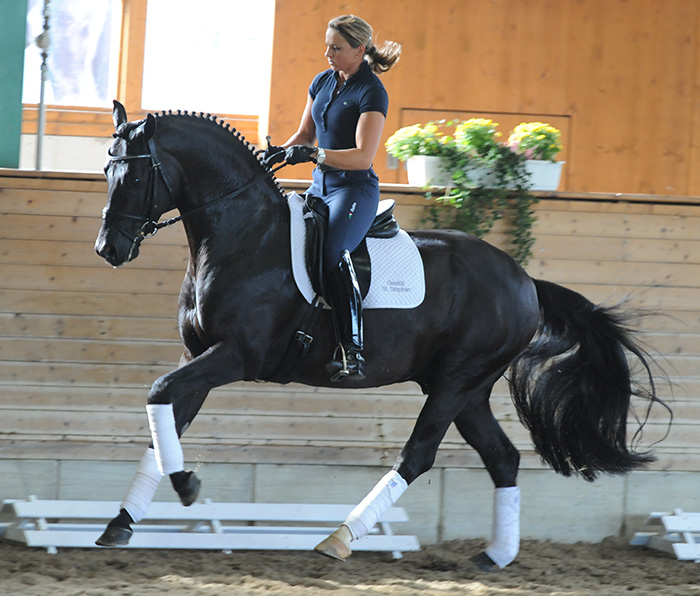
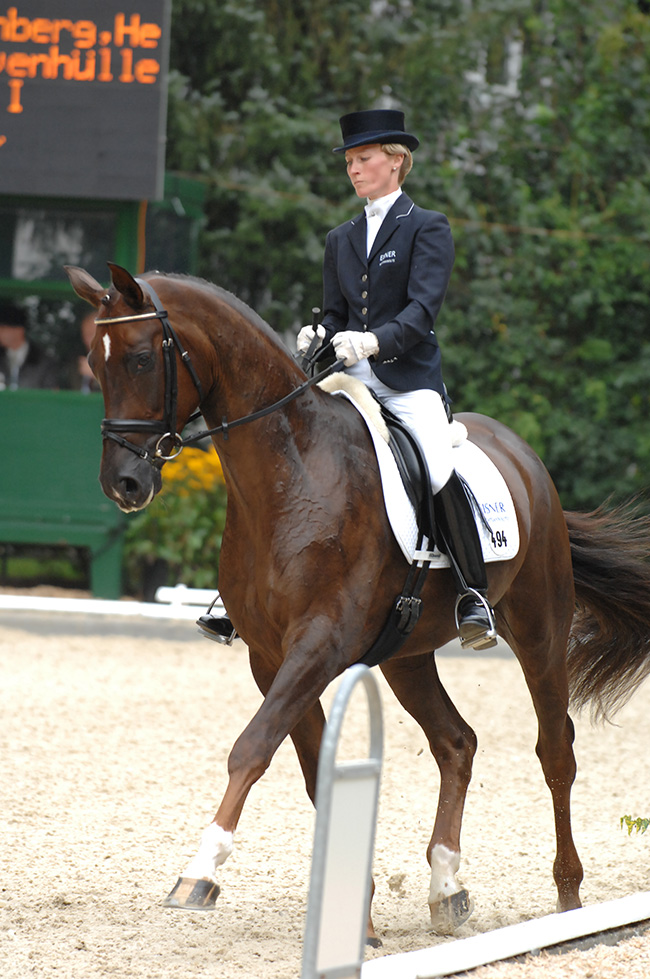
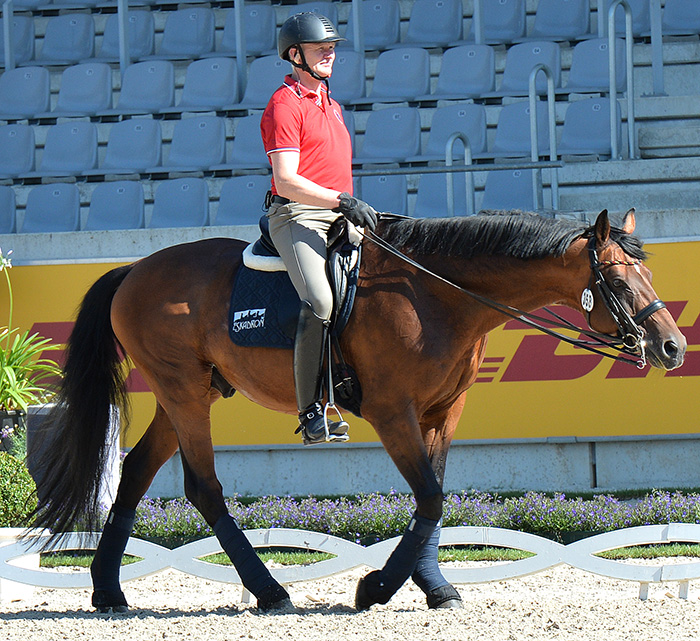
Super pics showing what it actually looks like. We hear so many people talking not actually knowing what it look like. Great to see words matching reality.
Always fabulous clear explanation’s from Christoph Hess. Thank you.